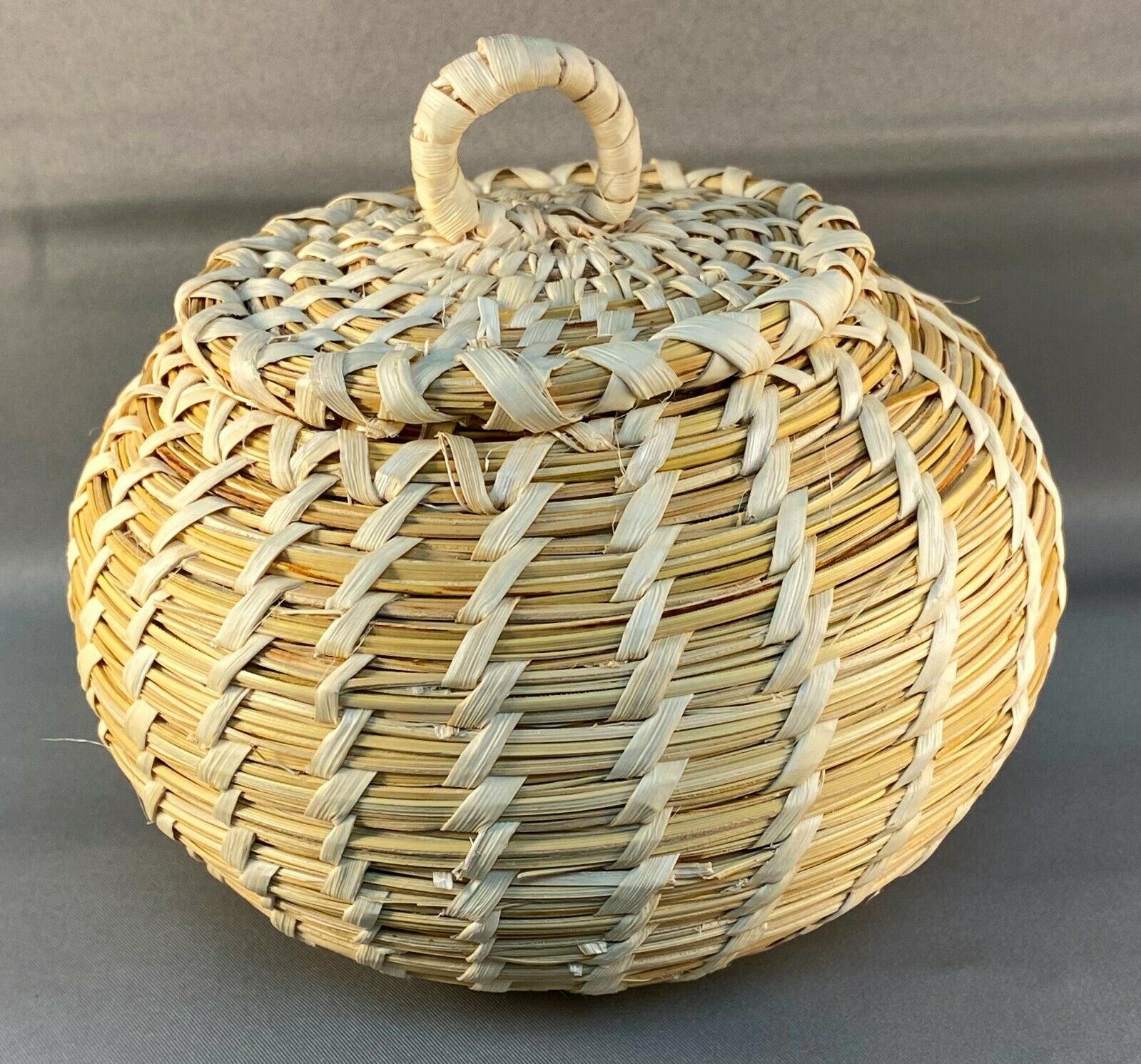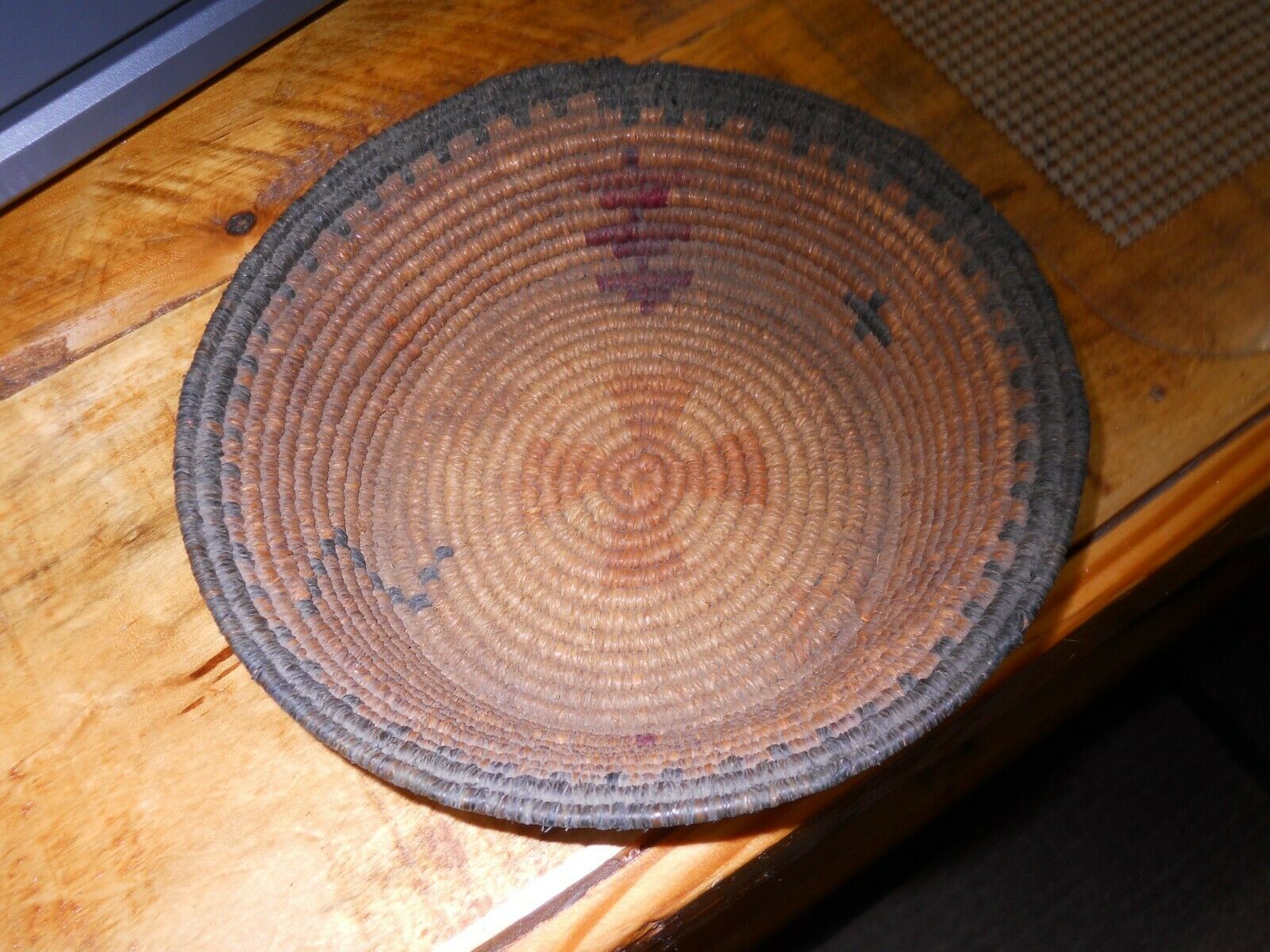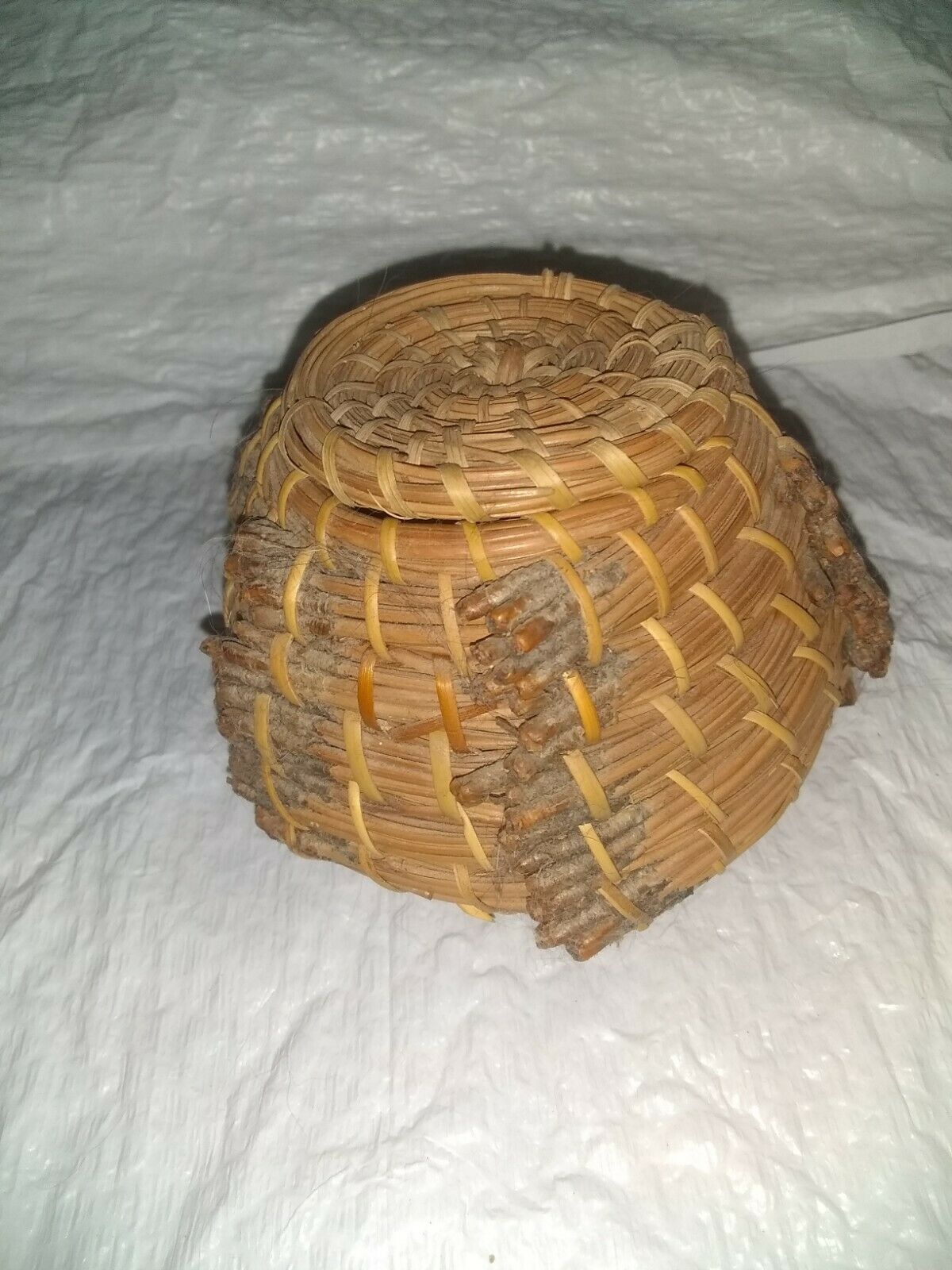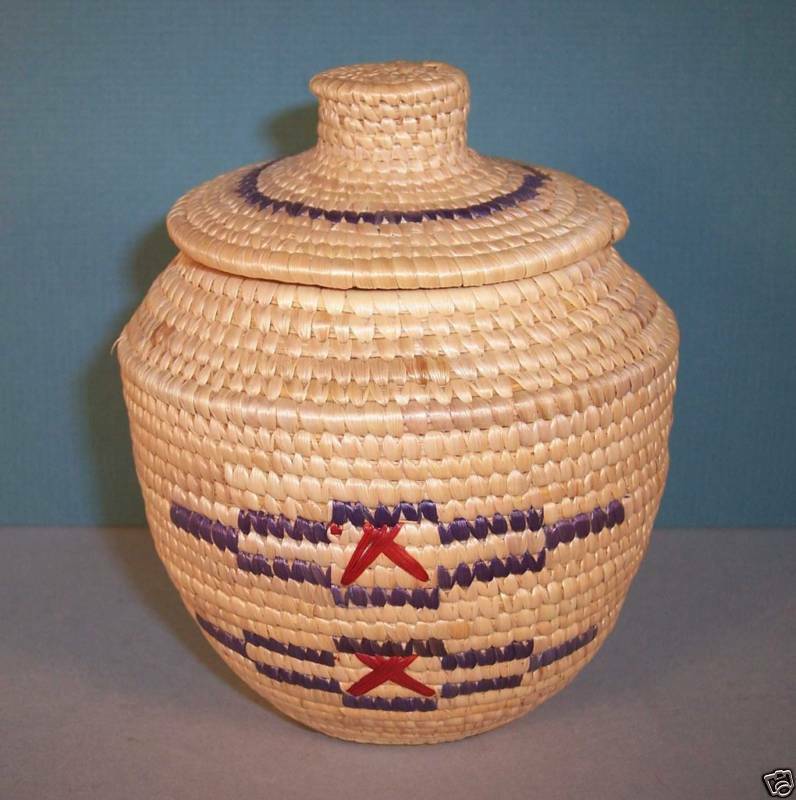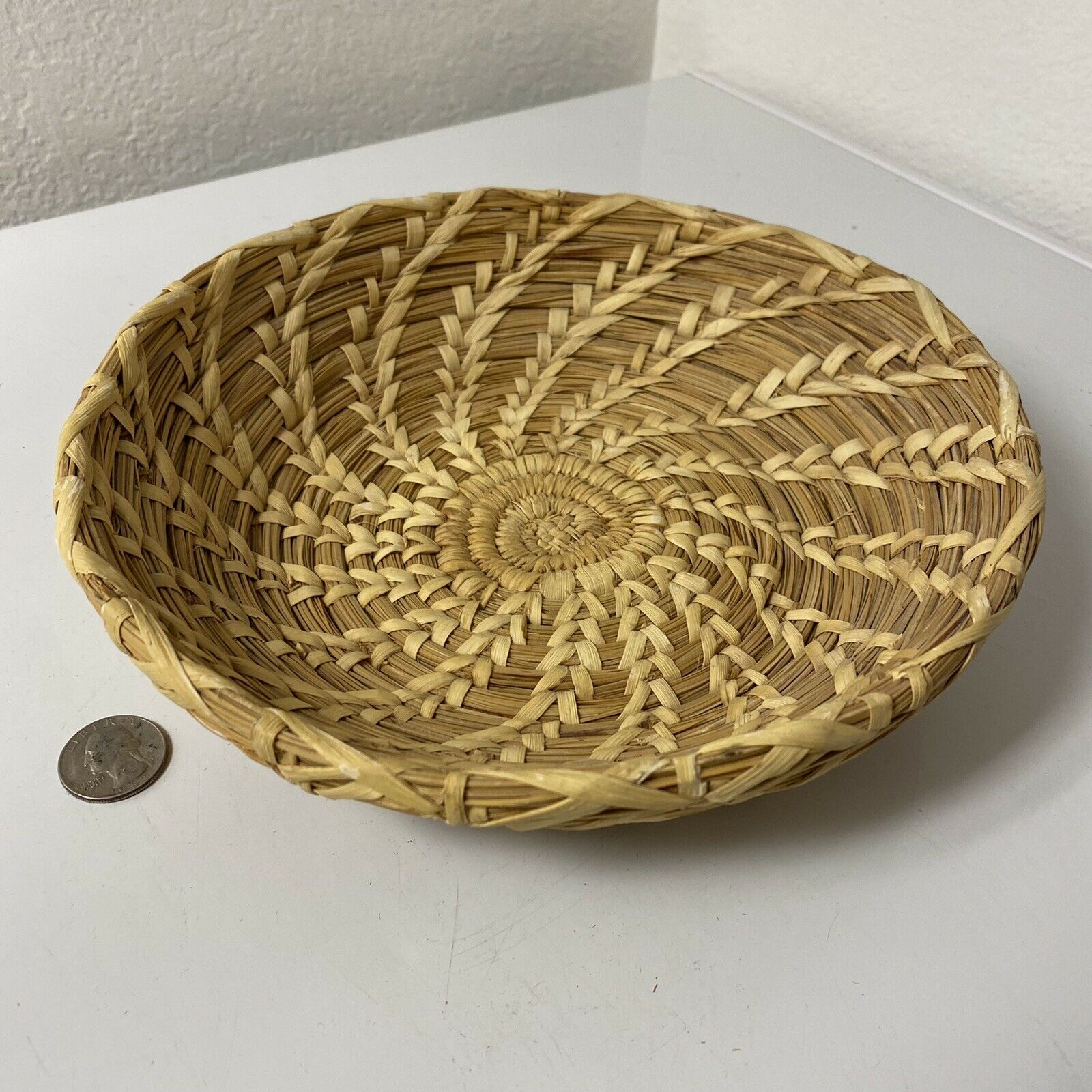-40%
Wabanaki People(6) & Canoe of Quillwork /BirchBark Box,by Paul St. John, Mohawk
$ 120.25
- Description
- Size Guide
Description
Six Wabanaki people and a canoe all of porcupine quill were placed on this oval birch bark container by Paul St John, Mohawk craftsman.(Wabanaki Confederacy - 5 tribes living in what is now Maine, Vermont & Eastern Canada: Abenaki, Maliseet, MicMac, Passamaquoddy, Penobscot).
Paul St John is a registered Mohawk who grew up on his father's Mohawk lands. Paul's mother is Passamaquoddy/Maliseet/MicMac and he now lives near his mother's relatives in Maine. He grew up visiting with elders of these tribes learning crafts, history and culture from them.
All the people on this box are dressed in traditional clothing c/1700-1850. On the top of the lid of this birch bark container is a Wabanaki man with a walking stick and a pipe, and a Wabanaki woman carrying a basket. The man wears a traditional cap with a long ribbon hanging at the back and a long "great coat". The woman wears a long skirt, a traditional peaked cap and has a white collar.
They are standing on green grass.
On the front of the container is a canoe with two Maliseet men, the man in back paddling with a white paddle. Both wear Maliseet "Hunting caps" - while most Wabanaki clothing was not specific to any one tribe, some like these caps were exclusive (or nearly so) to one tribe. Maliseet hunting caps have long backs that hang down over the collar to keep the wearer warmer. You can see the long cap backs here, one red and 1 green. These caps also have "ears" but as this is a side view of these men, those aren't visible.
The second to the last photo in the slideshow shows a mid 1700's Maliseet hunting cap. This cap is in a New Brunswick, Canada Museum.
The canoe has 2 X designs - one on bow, one on stern. It sits on blue water.
On the back of the container - it has the "seam" where the bark ends are fastened - is a Maliseet man, his hunting cap has a longer yellow back. He has a pipe and a walking stick.
On one narrow end is a Wabanaki woman wearing a peaked cap and carrying a basket.
The third to last photo is of a MicMac (Mi'kmaq is the Canadian spelling) mother and son - taken in 1865 it shows a peaked cap worn by Wabanaki women and a great coat worn by Wabanaki men of that era and earlier.
This oval birch bark container is - on top 6.5" long, 5.25" across at widest/middle point, - on bottom 7" long, 4.5" across at widest/middle point and it is 5" high. It flares a bit from top to bottom. It has tidal sweetgrass at it's top and bottom rim and also on the bottom edge of the overhanging lid and the rim around the lid's top ... where the overhang to the lid is attached. The birch bark has natural color variations (the outer white bark is on inside of box). There is a natural white w/darker end tips porcupine quill border around the outer edge of the box's lid and another similar quill border beneath the sweetgrass rim at top of the basket.
The colored porcupine quills have been dyed ....green, blue, yellow, tan, brown, black and dark red. Each color requires a separate preparation - mixing dye, heating it, constantly stirring the quills so they pick up the color evenly, laying them out to dry so that no quill touches another, turning them so each side dries in timely fashion so mold doesn't take hold, packaging them when totally dry - which requires care or you will get a painful poke. --- This box had had a lot of time put into the dye process as well as the making of the designs - people & accessories. -
Paul St. John now lives in Maine. He is an enrolled Mohawk tribal member. He grew up on the Mohawk lands in New York, his father's homeland. His mother is Passamaquoddy/MicMac/Maliseet - When I saw his work I knew immediately I needed to offer his baskets, quill boxes, dolls and more.
Paul is shown in slideshow above with 2 of his works - one of them is a coiled sweetgrass basket with a cardinal. Paul has made many of these baskets with various quill animals, fox, bear, beaver, deer, wolf, moose - and even more birds, cardinal, eagle, loon, blue jay, hawk, hummingbird, great blue heron, chickadee. I am forgetting some I am sure - see if your favorite is in this ebay store. He not only does sweetgrass coil baskets and porcupine quill work on birch bark -- but also amazing dolls, Iroquois beadwork, Wabanaki beadwork, great moccasins, knife sheaths, medicine bags and so much more! He is truly a man of many (many many) talents!
Watch this store for more of his pieces. Can't wait to see what he is going to create next.









